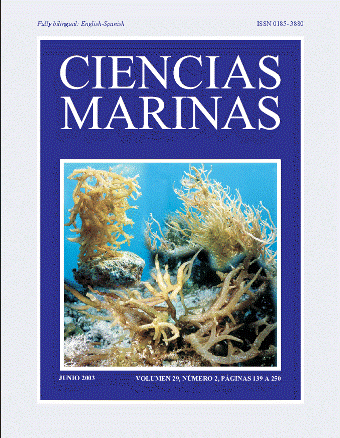Effect of sulfated carrageenan on the cellular response of the lobster Panulirus interruptus
Main Article Content
Abstract
In the present work, the cellular defense reaction of the spiny lobster Panulirus interruptus was studied after being inoculated with the sulfated polysaccharide carrageenan. Three in vivo experiments were undertaken, where 0.2 mg mL–1 carrageenan were administered to adult lobsters and hemolymph samples were taken at different times (0, 1, 3, 6, 12, 24, 36 and 48 h). The total hemocyte count and the types, such as hyalocytes, granulocytes and large granule granulocytes, were recorded. After 24 h, the total hemocyte count in the control group was lower than that observed in the experimental group. During the in vitro experiments, the percentage of phagocytosis by lobster hemocytes was studied using the Gram-negative bacteria Escherichia coli. A phagocytosis of 7.6% to 31.9% was observed using various carrageenan concentrations (0.0%, 0.05%, 0.1% and 0.5%) in the presence of lobster serum, whereas in the reference treatment, E. coli incubated in artificial lobster hemocyte medium showed lower phagocytic activity (6.2% to 22.2%) at the same carrageenan concentrations. It is concluded that lobsters in the presence of a sulfated glycan had a nonspecific response, with the resulting increase in cellular level and indirect phagocytosis stimulation.
Downloads
Article Details
This is an open access article distributed under a Creative Commons Attribution 4.0 License, which allows you to share and adapt the work, as long as you give appropriate credit to the original author(s) and the source, provide a link to the Creative Commons license, and indicate if changes were made. Figures, tables and other elements in the article are included in the article’s CC BY 4.0 license, unless otherwise indicated. The journal title is protected by copyrights and not subject to this license. Full license deed can be viewed here.

